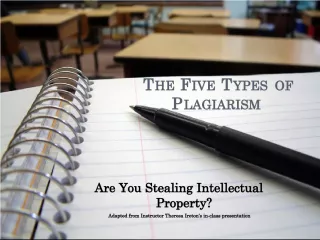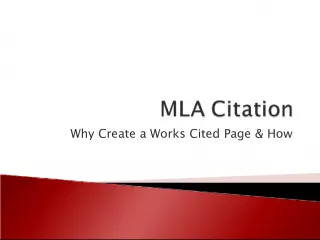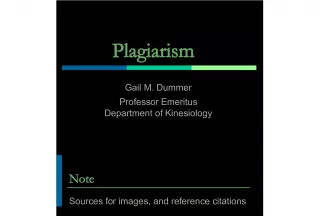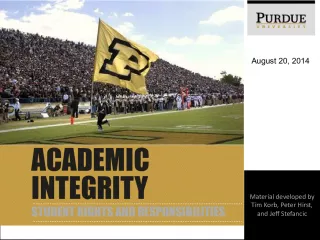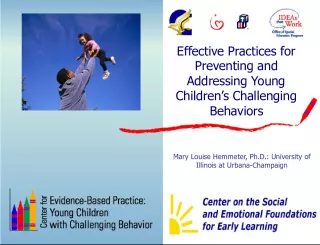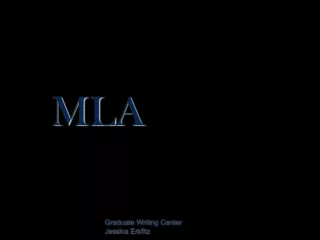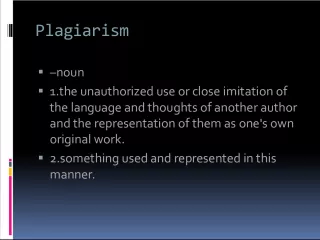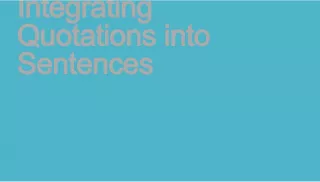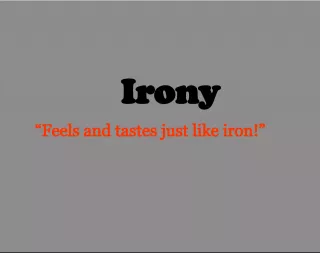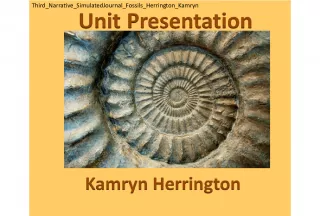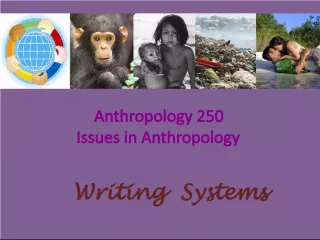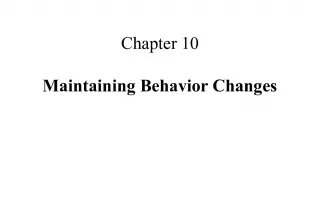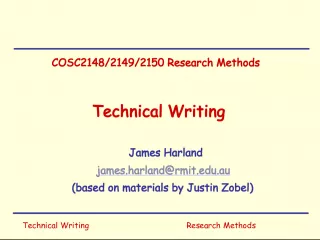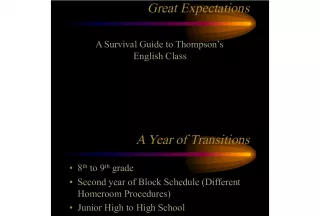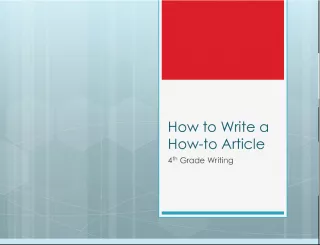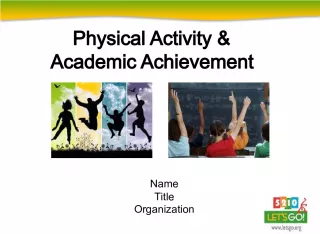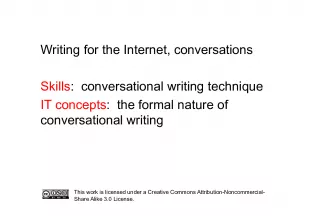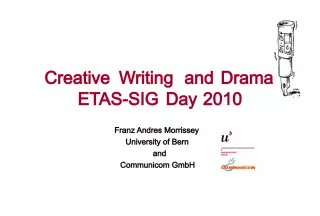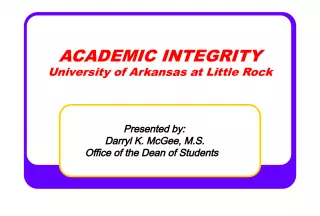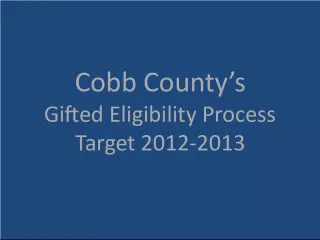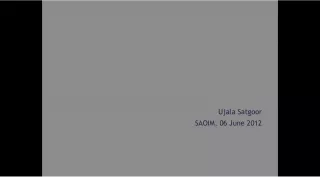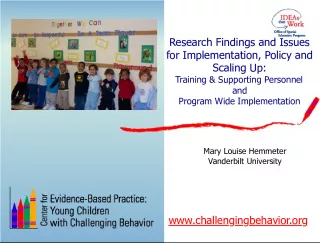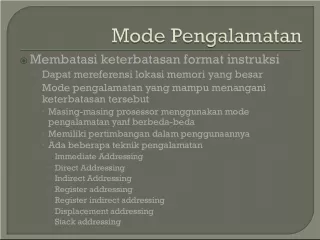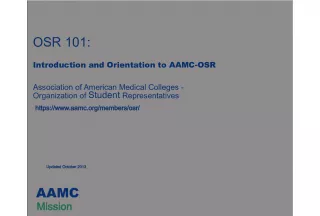Addressing Academic Dishonesty: Preventing Plagiarism in Student Writing
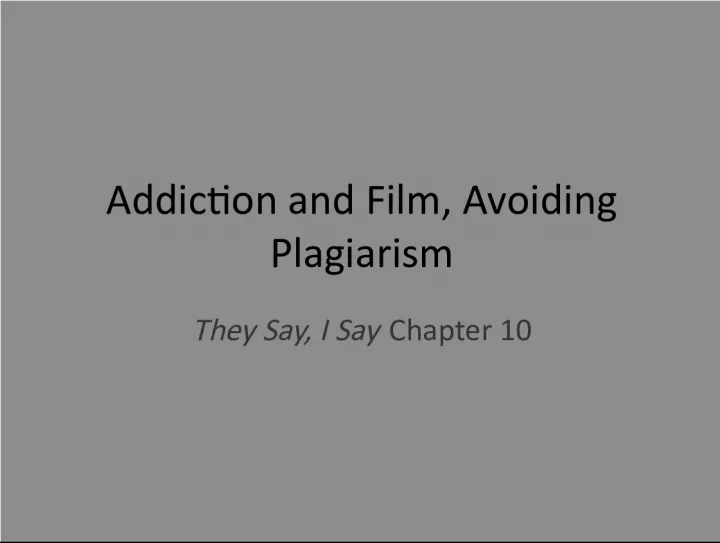

This piece discusses the common reasons that students plagiarize and cheat in their written assignments, as well as potential solutions for preventing academic dishonesty.
- Uploaded on | 1 Views
-
 stephaine
stephaine
About Addressing Academic Dishonesty: Preventing Plagiarism in Student Writing
PowerPoint presentation about 'Addressing Academic Dishonesty: Preventing Plagiarism in Student Writing'. This presentation describes the topic on This piece discusses the common reasons that students plagiarize and cheat in their written assignments, as well as potential solutions for preventing academic dishonesty.. The key topics included in this slideshow are plagiarism, academic dishonesty, student writing, cheating, prevention Thesis statement: Plagiarism is a significant issue in student writing, and it is often caused by a lack of understanding about proper citation and academic integrity, as well as academic pressures and time constraints. An effective approach towards preventing plagiarism involves education, clear guidelines, and supportive resources for students. Freewrite response: Plagiarism is a widespread issue in student writing, and it can have serious consequences for academic success and integrity. Why do students resort to plagiarizing or stealing others' ideas? Perhaps they feel overwhelmed by the demands of school, or they lack confidence in their own writing abilities. Maybe they believe that copying and pasting content is a quick and easy way to complete their assignments. Regardless of the motivations behind plagiarism, it is essential that we address this issue proactively. To prevent plagiarism from occurring, we need to provide students with comprehensive education on academic integrity, proper citation practices, and the consequences of plagiarism. We also need to create clear guidelines and resources that make it easy for students to understand and comply with best practices for academic writing. By acknowledging the root causes of plagiarism and working collaboratively to prevent it, we can help students develop their writing skills with honesty and integrity,. Download this presentation absolutely free.
Presentation Transcript
1. Addiction and Film, Avoiding Plagiarism They Say, I Say Chapter 10
2. Quickwrite #5 Come up with a clear thesis statement that answers this question, and then begin to answer it in the form of a freewrite. What do you think are the most common reasons that some students plagiarize (cheat, steal others words or ideas) on their written assignments? What do you think should be done in order to address these reasons and prevent plagiarism from occurring?
3. Chapter 10 of They Say / I Say What is metacommentary? Why do authors sometimes feel the need to include it in their writing? In your research paper, you might need to explain to your readers how to read your points in order to avoid confusion or misunderstanding.
4. Chapter 10 of They Say / I Say P. 129 of TSIS says, metacommentary is a way of commenting on your claims and telling others howand how notto think about them. Add an additional paragraph to your quickwrite in which you include one or more examples of metacommentary that tells your reader how to think about your points. Are there any potential misunderstandings that you can clarify? (p. 135) Can you introduce and then provide a specific example of your point? (p. 136) Can you anticipate some objections to your point and answer them? (p. 136) Can you tie all of your small points together to make one general point? (p. 137)
5. Three Basic Rules for Avoiding Plagiarism: 1. Make sure all word-for-word quotes have quote marks showing where they begin and end. Also, make sure to make the difference between your ideas and your sources ideas clear when paraphrasing or summarizing. 2. Identify where each quote OR paraphrased idea came from in the body of your paper using in- text citations. 3. Make sure that each source you quote or paraphrase in your paper is correctly listed on your Works Cited page.
6. To Cite, or Not to Cite You do not have to cite facts that are undisputed common knowledge. Ex: The Battle of Gettysburg began on July 1, 1863. Ex: Water is made up of two hydrogen atoms and one oxygen atom. Ex: Dublin is the capital of the Republic of Ireland. However, once you start needing to use ideas about these common, everyday facts that you found in your sources, you must cite the source of the idea. When in doubt, cite! And if you have time, ask!
7. Some Myths about Plagiarism Myth 1: As long as I have a source on my works cited page, I dont have to mention it in the body of my paper. WRONG! Any time you use ideas or words from a source, you must include an in-text citation. Myth 2: As long as I change one or two words in a quote, I dont have to put quote marks around it or do a citation. WRONG! Changing one or two words in a quote and replacing them with synonyms is STILL PLAGIARISM if you keep the original ideas and/or sentence structure. Myth 3: As long as I paraphrase correctly, using my own words and sentence structure to express an idea, I dont need an in- text citation. WRONG! Even if you use your own words, if the idea originally came from somewhere else, you must cite it.
8. Myths about Plagiarism Myth 4: I dont need to cite exact words, ideas or information I find on the internet. WRONG! Treat your internet sources with the same respect you have for your print or online database sources. Myth 5: It is appropriate to use an old essay from a friend, buy an essay, or have someone help me write an essay using his or her wording instead of mine. WRONG! All of these are called collusion, and they are all plagiarism. Myth 6: I wont get caught if I plagiarize. WRONG! Plagiarism is quite obvious to most professors, and many of them use plagiarism detecting software.
9. Resources to Help you Avoid Plagiarism P. 451-456 of Rules for Writers for avoiding plagiarism. P. 458-459 for a directory of MLA citation information. P. 479-523 for MLA references. P. 523-532 for example research paper. Example research paper from the Purdue OWL Online plagiarism tutorial and quizzes from Simon Fraser University Plagiarism Self Test from Western Carolina University University of Southern Mississippis Plagiarism Tutorial
10. How to Use TurnItIn to Check for Plagiarism After you have uploaded your essay to turnitin, you will have the ability to check YOURSELF for any plagiarism. Your originality score should be less than 25%. This means that no more than 25% of your essay should be identified as word for word from a source, even if sources are quoted correctly. Any portions of your essay that turnitin highlights should be enclosed in quotes and given a correct MLA parenthetical citation.
11. What Happens if TurnItIn Finds Plagiarism? If you have time before the due date, you can fix the problem and upload a new, corrected file that will replace the old one. This means that it would be a good idea to give yourself time to correct any errors before the due date. If you discover accidental plagiarism after the due date, I will give you the opportunity to revise.
12. What about intentional plagiarism? Intentional plagiarism is cheating that is not the result of an accident, a lack of knowledge, or a citation error. For example, uploading an entire essay you bought or copied from a website is not an accident. What happens if turnitin identifies intentional plagiarism? Hope youve given yourself enough time to take it down and upload something you actually wrote before the due date. Because if I catch you, I will fail you on the assignment with no hope of revision so fast itll make your head spin.
13. Preparing to discuss Addiction and Recovery in American Film Think of a portrayal of drug use, alcohol use, or addiction that you have seen on film or television. Was the portrayal sensationalized? (Trying to shock the audience.) Was it sympathetic? Funny? Realistic? What do you think that this portrayal of addiction says about the attitudes of the artists who produced it and the culture who watches it?
14. Addiction and Recovery in American Film p. 335 According to the author, how has the depiction of drug use in American film changed over time? What do these changes tell us about how our culture thinks about drug use and addiction? How do these changes mirror changing attitudes/ideas?
15. The question of censorship In paragraph 6, Hall states that the Motion Picture Production Code upheld moral standards and opposed crime, wrongdoing, evil, or sin. Moviemakers dutifully followed these rules (335). The big question here is whether or not it is the responsibility of a piece of art to uphold moral standards. The writers and enforcers of the code were operating under that assumption (and were also afraid of federal regulation). What do you think?
16. Thou Shalt Not Photograph by A. L. Schafer In 1934 the MPAA voluntarily passed the Motion Picture Production Code, more generally known as the Hays Code, largely to avoid governmental regulation. The code prohibited certain plotlines and imagery from films and in publicity materials produced by the MPAA. Among others, there was to be no cleavage, no lace underthings, no drugs or drinking, no corpses, and no one shown getting away with a crime. A.L. Schafer, the head of photography at Columbia, took a photo that intentionally incorporated all of the 10 banned items into one image. The photograph was clandestinely (secretly) passed around among photographers and publicists in Hollywood as a method of symbolic protest to the Hays Code.
